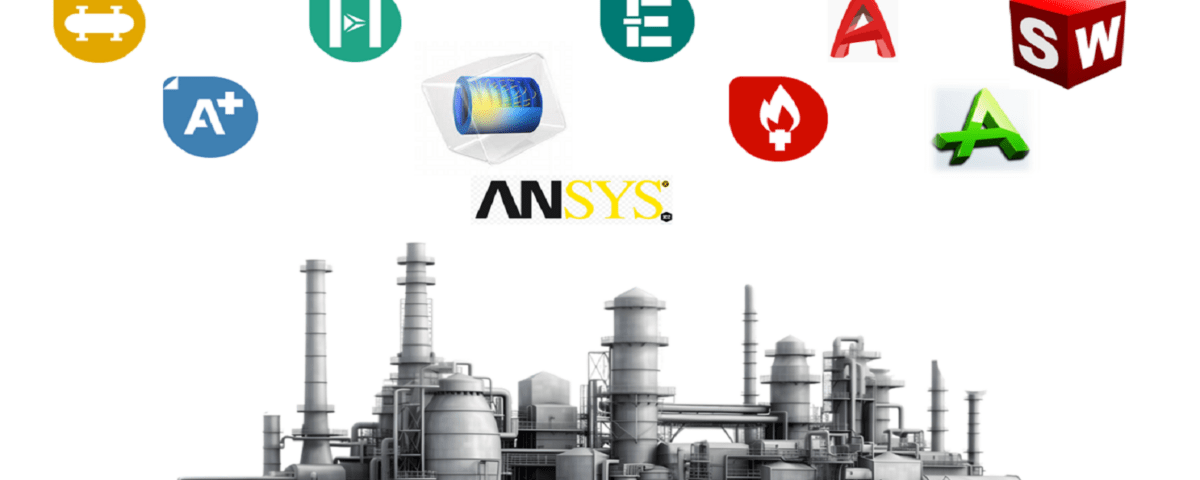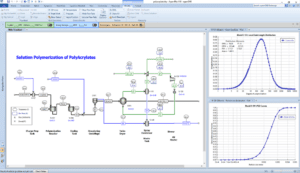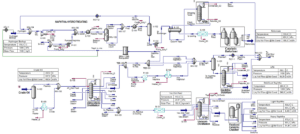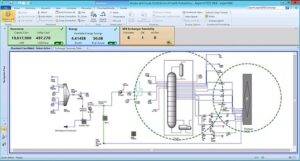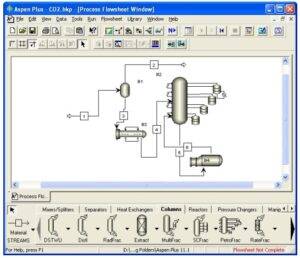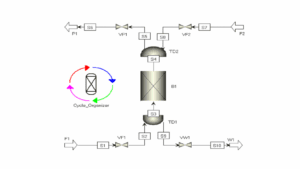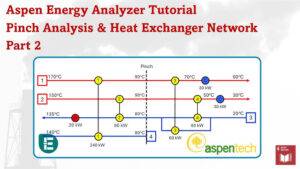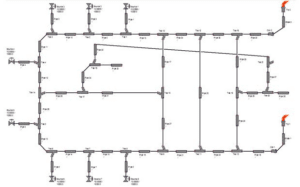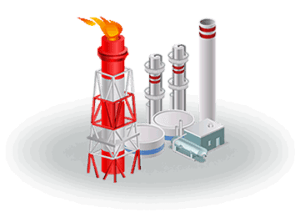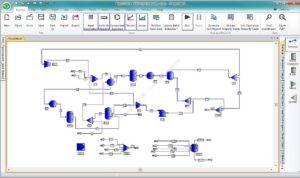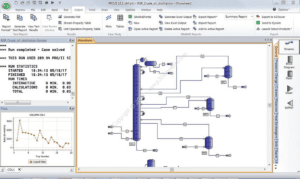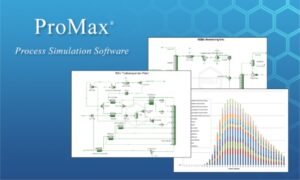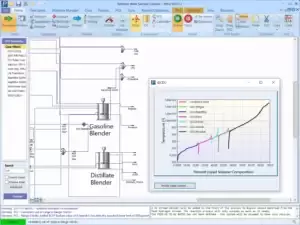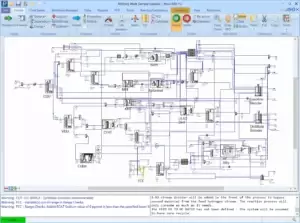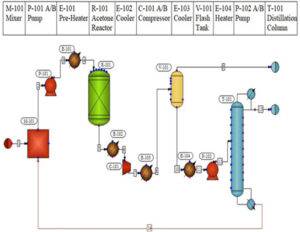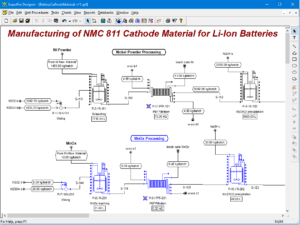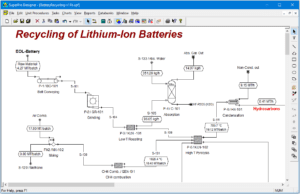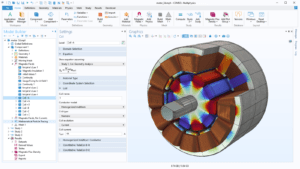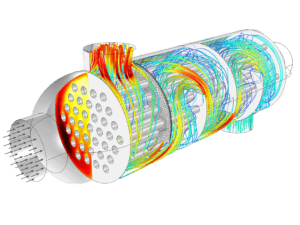
Industrial Process Simulation Software
مهر ۱۶, ۱۴۰۳
Providing PDP in Petrochemical and Refinery Units by APIPCO
آبان ۹, ۱۴۰۳Introduction
Chemical Engineering is a discipline concerned with the design, development, and operation of chemical and physical processes to produce various materials and products. Given that these processes are often complex and involve extensive calculations, the use of specialized software for simulation, analysis, and optimization is essential.
Process design simulators are powerful tools that enable engineers and researchers to model and analyze industrial processes virtually before implementation. Using mathematical models, these software programs can predict the behavior of complex systems and assist engineers in developing optimal designs. We will delve deeper into these tools in the following sections.
Why do we Need Process Design Simulation Software?
- Reduced Costs: By identifying problems and improving process performance before implementation, production and maintenance costs are reduced.
- Increased Efficiency: By optimizing process parameters, maximum efficiency can be achieved.
- Reduced Risk: Simulation allows engineers to examine various scenarios and identify potential risks.
- Accelerated Design and Development: Simulation can speed up the design and development of processes.
Key Components of a Process Simulator
- Graphical User Interface (GUI): Used to create and edit process models.
- Component Library: Contains standard components such as pumps, tanks, heat exchangers, etc.
- Equation Solver: Solves the differential and algebraic equations that describe the process model.
Process Simulation Can Be Performed In Two Ways:
- Steady-state: Mass and energy balances are performed under conditions where the process is not time-dependent.
- Dynamic (or unsteady-state): The basis of dynamic simulation is steady-state simulation. To perform dynamic simulation, steady-state simulation must first be carried out, then certain characteristics and parameters must be defined in the dynamic state, and finally, the simulation is run for the dynamic state. Dynamic simulation involves more complex mathematics and requires a longer runtime.
Introduction of Process Design Software
Aspen Plus
Aspen Plus, often simply referred to as Aspen, is a comprehensive and widely used software application for simulating and designing chemical processes. The name “Aspen” is an acronym for “Advanced System for Process Engineering.”
Developed by AspenTech, Aspen Plus is part of a comprehensive software suite known as Aspen One. It has a wide range of applications in the industry, including design, development, optimization, and improvement of operational conditions in petrochemical and refinery processes. Aspen Plus is considered one of the most comprehensive and important software programs in this field.
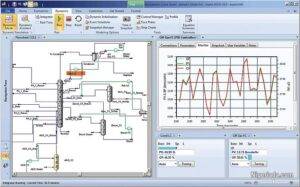
Aspen Plus Capabilities
This software is a robust simulation software renowned for its:
- High Speed and Accuracy: Efficiently solves complex chemical and thermodynamic problems.
- Versatility: Simulates a wide range of chemical processes, including those in the oil, gas, petrochemical, electrolytic, polymeric, and pharmaceutical industries.
- Comprehensive Equipment Modeling: Designs and simulates various process equipment, such as towers, mixers, pumps, compressors, and heat exchangers.
- Solid Material Handling: Capabilities for simulating processes involving solid materials.
- Steady-State and Dynamic Simulation: Supports both steady-state and dynamic simulations for comprehensive process analysis.
- Data Analysis and Optimization: Provides tools for analyzing various parameters through diverse plots and optimizing process conditions.
- Customization: Offers extensive programming capabilities using FORTRAN for tailoring simulations to specific needs.
Aspen Hysys
Aspen Hysys, often referred to as Hysys , is another powerful simulation software be developed by AspenTech. It is highly regarded for its:
- Process Simulation Excellence: Specifically designed for simulating refinery, petrochemical, electrolytic, and solid material processes.
- Precision and Efficiency: Delivers accurate and efficient calculations for complex engineering problems.
- Extensive Component Database: Offers a vast database of substances and their properties, enabling detailed modeling.
- Comprehensive Capabilities: Simulates individual process units as well as entire process plants
HYSYS Capabilities HYSYS can perform many fundamental calculations in chemical engineering, including:
- Mass balance
- Energy balance
- Vapor-liquid equilibrium
- Heat transfer
- Mass transfer
- Chemical kinetic
- Separation processes
- Pressure drop
Differences between ASPEN PLUS and HYSYS While both software packages have similar interfaces, there are key differences. One major difference is in the solver behavior. In HYSYS, calculations automatically start as soon as sufficient input data is provided, unless the user manually pauses the solver. In contrast, Aspen Plus requires explicit user initiation for calculations. HYSYS is commonly used for:
- Petrochemical processes
- Refinery processes
- Oil and gas industries
- While Aspen Plus is more suited for:
- Chemical processes
- Electrolytic processes
- Polymer processes
- Solid materials
Aspen Adsim
ASPEN ADSIM is a specialized tool within the Aspen Tech suite, designed for simulating adsorption processes. It offers features for process modeling, dynamic behavior analysis, and accurate mass and energy balance calculations
This process modeling and simulation software offers features such as precise process understanding, dynamic behavior analysis, accurate computational operations, mass and energy balances, and many other applications.
ASPEN software consists of various modules, each focused on a specific area. For instance, Aspen Plus is used for chemical process simulation, ASPEN Properties for determining physical and chemical properties of materials, and Aspen B-JAC for designing heat exchangers. Another module, Aspen Adsim, is specifically designed for simulating adsorption processes.
Aspen Energy Analayzer
Energy analyzers are indispensable tools for optimizing costs, reducing energy consumption, identifying and resolving energy quality issues, protecting equipment, and improving energy management strategies. For large-scale studies, energy analyzers are particularly valuable.
Key Features of Aspen Energy Analyzer
- Precise Process Simulation: This software can create highly accurate models of industrial processes, encompassing equipment, fluid streams, and operating conditions.
- Energy Consumption Analysis: Using these models, Aspen Energy Analyzer can calculate and analyze energy consumption at every point in a process.
- Identification of Energy-Intensive Areas: The software automatically identifies the areas of a process that consume the most energy.
- Optimization Recommendations: Aspen Energy Analyzer offers practical solutions to reduce energy consumption by suggesting changes to operating conditions, equipment design, or the selection of new equipment.
- Economic Evaluation: The software can assess the economic impact of proposed changes on operating costs.
Applications
- Industrial Process Optimization: The software can be used to optimize energy consumption in various industries, such as refineries, petrochemical plants, and power plants.
- New Plant Design: Aspen Energy Analyzer can be used during the design phase of new industrial plants to select energy-efficient equipment.
- Reduced Operating Costs: By reducing energy consumption, the software can significantly decrease operational costs.
- Reduced Greenhouse Gas Emissions: Lower energy consumption contributes to reduced greenhouse gas emissions and environmental protection.
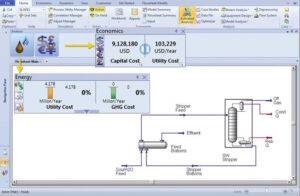
Aspen Flarenet
The issue of flaring in the oil, gas, and petrochemical industries holds significant importance from two primary perspectives. First, the gases sent to flares often have substantial economic value. Second, the combustion of these gases has detrimental environmental impacts. Therefore, to prevent flaring, management strategies must be implemented to mitigate various scenarios within a refinery and optimize the utilization of gases that would otherwise be flared.
To facilitate the specialized design, engineering calculations, and simulation of these processes, the dedicated software Aspen FlareNet is employed. This software empowers process engineers to accurately simulate the performance of flares, predicting parameters such as flame temperature, exit gas velocity, pollutant emissions, and more. By offering advanced and precise capabilities, it assists engineers in enhancing process performance
Pro II
Pro II is a professional software application designed for the design and simulation of chemical processes, as well as for process analysis in the oil, gas, and chemical industries. It excels at accurately calculating heat and material balances within a project, and offers a variety of thermodynamic models suitable for many chemical applications.
PRO/II is a robust and flexible software tool designed for simulating a wide range of steady-state processes, from refining to chemical manufacturing. It delivers accurate and reliable results based on industry-standard thermodynamic methods and physical property data.
Promax
PROMAX is a powerful, versatile, flowsheet-based process simulation software. It’s used for the design and optimization of gas processing, refining, and chemical plants. For 35 years, Bryan Research & Engineering (BR&E) has been committed to providing process simulation software to the energy industry that accurately and efficiently predicts the performance of gas processing, refining, and chemical processes.
Today, BR&E’s ProMax simulator is used by engineers worldwide to design and optimize processing facilities. Fully integrated with Microsoft Visio, Excel, and Word, ProMax is a comprehensive tool that offers unparalleled flexibility.
Some common applications of ProMax include:
- Crude oil characterization
- Refining processes
- Gas and liquid sweetening
- Sulfur recovery
- Chemical processes
- LPG recovery and fractionation
- Hydrate inhibition/glycol dehydration
- Pipeline systems
Petrosim
Petrosim is a leading software for simulating refinery processes, developed by KBC. It empowers process engineers to model, analyze, and optimize complex refinery operations.
Petrosim Application
- New Refinery Unit Design and Simulation: Petrosim enables engineers to design new refinery units and predict their performance.
- Optimization of Existing Processes: Petrosim can be used to optimize existing processes and increase production capacity.
- Troubleshooting Operational Issues: Petrosim helps identify operational problems and find suitable solutions.
- Training: Petrosim serves as a valuable educational tool for training process engineers in refinery process simulation.
Chemcad
Chemcad is a comprehensive software for simulating chemical processes, allowing chemical engineers to model, analyze, and optimize complex processes.
What can you do with Chemcad?
- Simulate Various Processes: Chemcad can simulate a wide range of chemical processes, including distillation, absorption, extraction, reaction, and more.
- Process Design and Optimization: Chemcad can be used to design new processes and optimize existing ones.
- Sensitivity Analysis: This software allows you to analyze the impact of changes in various parameters on process performance.
- Mass and Energy Balance Calculations: Chemcad automatically performs mass and energy balances for simulated processes.
- Equipment Design: This software can design various equipment such as distillation columns, heat exchangers, and more.
- Dynamic Simulation: Chemcad can simulate process dynamics, allowing you to examine process behavior under different conditions.
Super Pro Designer
This software can assist in the evaluation and optimization of integrated batch and continuous processes in a wide range of industries, including biotechnology, pharmaceuticals, specialty chemicals, food processing, metallurgy, materials, water purification, wastewater treatment, and air pollution control.
What CanYou Do With Super Pro Designer?
- Model Complex Processes: SuperPro Designer can model intricate processes involving multiple stages and operational units.
- Simulate Batches: This software allows you to simulate different batches within a process and assess the impact of changes in each batch on the overall process.
- Process Optimization: SuperPro Designer assists in process optimization by modifying various parameters to achieve maximum yield and minimal cost.
- Economic Analysis: This software can perform economic analyses of processes, helping you estimate production costs.
- Design Operational Units: SuperPro Designer enables you to design diverse operational units such as reactors, heat exchangers, filters, and more.
- Simulate Separation Processes: This software can simulate separation processes like distillation, extraction, crystallization, etc.
COMSOL MULTIPHYSICS
COMSOL Multiphysics is a versatile software that utilizes advanced numerical methods to model and simulate physics-based problems. You can also develop a simulation platform using specialized tools and interfaces for electrical, mechanical, chemical, and fluid flow applications.
Applications of Comsol Multiphysics
Mechanical Engineering: Simulation of fluid flow, heat transfer, structures, and vibrations. Electrical Engineering: Simulation of electronic circuits, electromagnetics, and electronic devices. Chemical Engineering: Simulation of chemical processes, mass transfer, and chemical reactions. Life Sciences: Simulation of blood flow, drug delivery, and cell growth. Geosciences: Simulation of subsurface flow, earthquakes, and atmospheric phenomena.
Concussion
Process design software has become an indispensable tool for chemical engineers, enabling them to design, analyze, and improve complex processes with greater precision and speed. The use of these software packages not only leads to increased efficiency and reduced costs but also fosters innovation and the development of new products. While learning these software programs requires a foundational knowledge of chemical engineering along with practice and experience, many of these tools offer user-friendly interfaces and educational resources. In today’s competitive world, proficiency in these software packages is a significant competitive advantage for chemical engineers.
